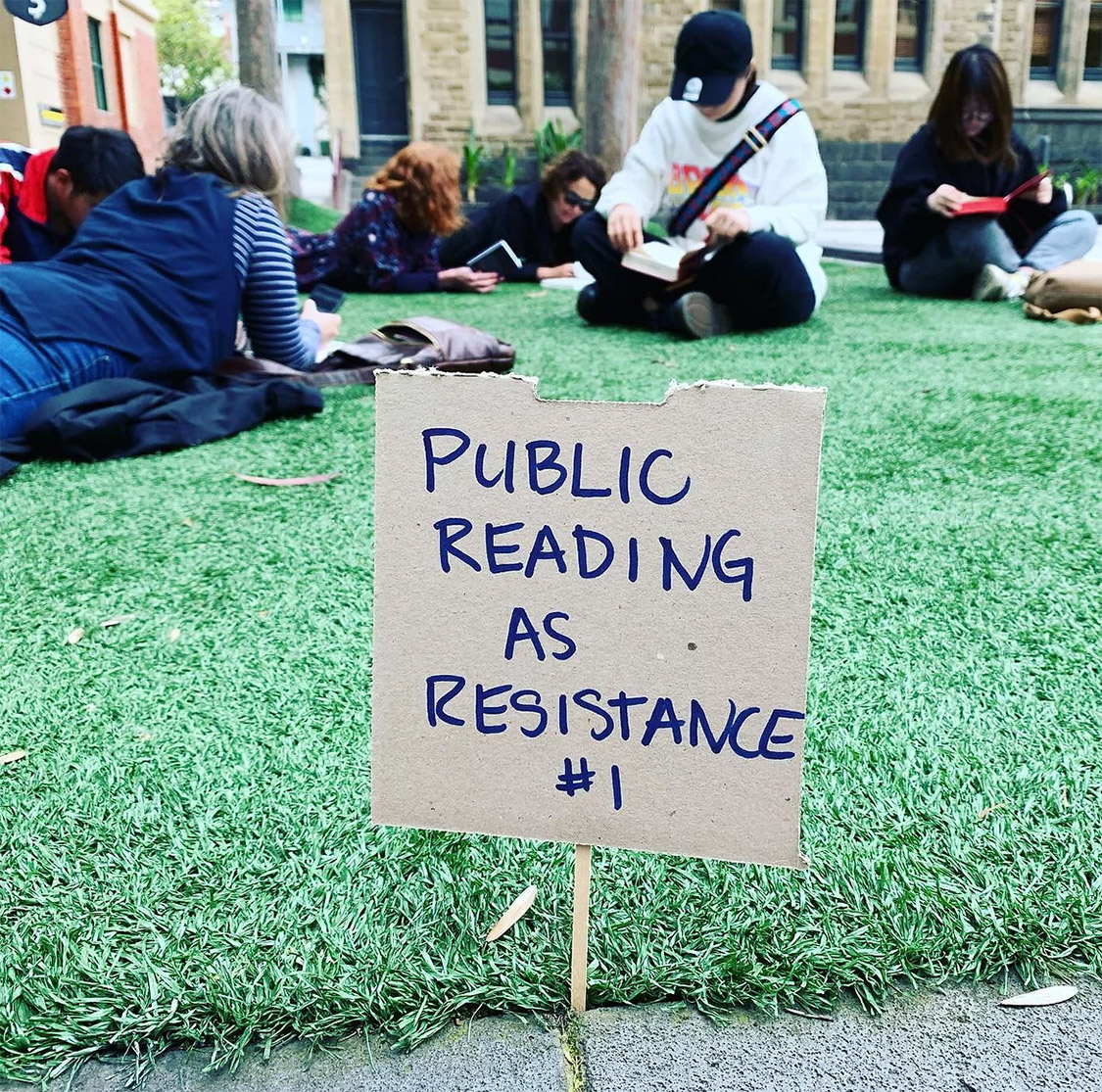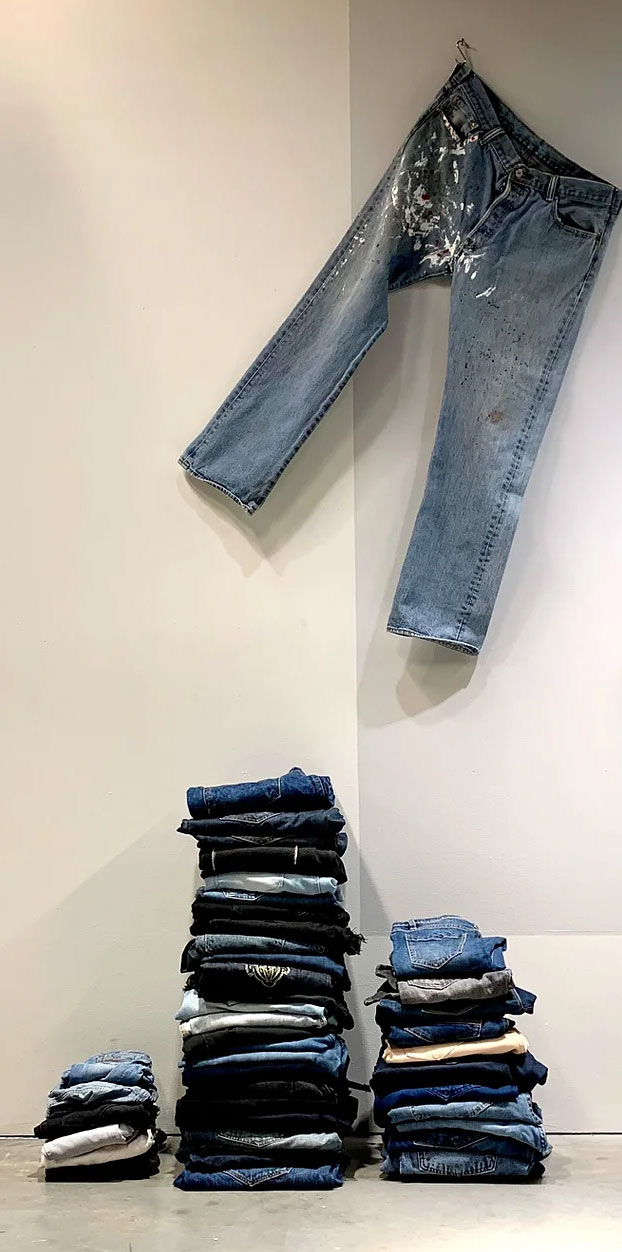What is an artist-researcher? A Q&A with Dr Marnie Badham
As part of the Creatives, Communities and Economies research project, we’re hosting three artist-researchers at RMIT PlaceLab Brunswick for residencies between September and November 2023. We’re excited to see how Varuni Kanagasundaram (clay, textiles), Jody Haines (photo, public art), and Channon Goodwin (mapping commons) bring their practices into our research studio. We’ll post updates for each artist-researcher during their residency, but in this post we chat to Dr Marnie Badham about art and artist residencies as research practices. Marnie has extensive experience as an artist-researcher and is one of the academic leads on the Creatives, Communities and Economies project.

‘Public Reading as Resistance‘ facilitated by Marnie Badham, Kelly Hussey-Smith and collaborators. Image: Ceri Hann 2019
What does an artist-researcher do?
Creatives increasingly play an important role in the civic imagination by activating public space, connecting with communities, asking critical questions, and documenting our times. Artist-researchers use creative practice to examine and respond to these critical questions and contexts.
What is an artist residency?
Residencies typically provide artists with time and space away from everyday life to research, develop, and produce new creative work. Residencies can be hosted by arts and non-arts organisations and studios, equipment, and connections with creative peers or new audiences may also be provided.
While artist residencies seemed to once be an endeavour of creative solitude, the preoccupation with ‘the social’ in contemporary residencies can be located in the historical lineage of early artist colonies and systems of social exchange. Increasingly, residencies provide opportunities for socially-motivated artists to develop projects that are site-responsive or focused on public interaction. These residencies can include partnerships with community, local government or health, education or justice organisations.
Creatives increasingly play an important role in the civic imagination by activating public space, connecting with communities, asking critical questions, and documenting our times.

How does Creatives, Communities and Economies respond to the current arts contexts?
The work of artists, photographers and community organisers have become hybridised, digitised, and increasingly responsive to people and place. New labour models for the future of creative work are being developed within the ongoing crisis facing the arts nationally and locally – new and radical strategies for the visual arts industry are a priority for artists, arts organisations, government and is our research subject for Creatives, Communities and Economies and other ongoing projects.
Creatives, Communities, and Economies will host three diverse artists and practices with a focus on forms of ‘artist in community’ engagement. These projects will enable collaborative, place based, context responsive, socially engaged art practice and hyper local industry engaged problem solving. These artists will engage RMIT PlaceLab as a test site for creative engagement through alternative social economies for the future of work in the creative industries enabling experimentation, collaboration, and real-world application for the research.
Thanks, Marnie! We appreciate your insights and your work as an artist-researcher.
Want to get involved in this project?
Drop in to the RMIT PlaceLab and add your story to our community map. The map is a connection of the overarching themes of sites of creativity, loss, and potential in Brunswick and we would love to hear your thoughts.